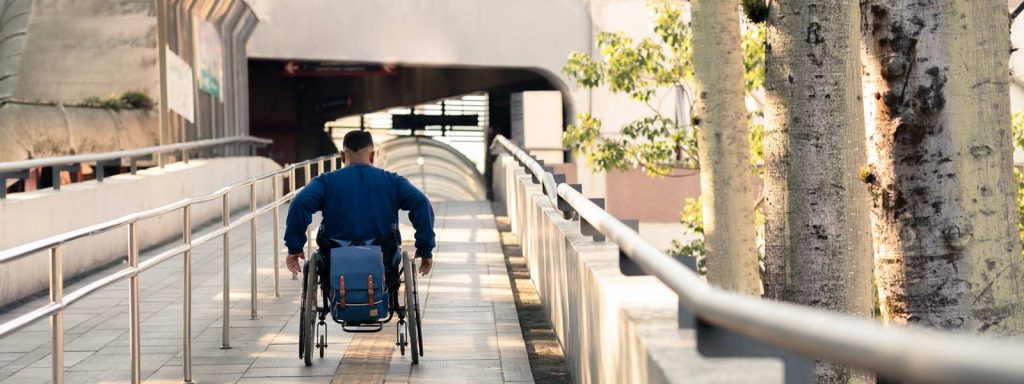Reducing travel anxiety using slam technology
Travel anxiety is a familiar issue for disabled people, particularly those who are visually impaired or have mobility issues. Navigating unfamiliar and busy indoor spaces can often be challenging and overwhelming, making it difficult for these individuals to travel independently. This can lead to a decreased quality of life and social isolation, as participating in daily activities becomes more challenging.
SLAM, or simultaneous localisation and mapping, is a technology that has the potential to improve accessibility and transform the way that disabled people navigate unfamiliar spaces, without needing mobile data or a Wifi connection.
The tech uses sensors, such as phone cameras or lidar, to create a detailed map of an environment, while simultaneously pinpointing the device’s location in that map. This system can then be used to accurately guide a person through an indoor space.
For example, a visually impaired person can use a navigation system that utilises SLAM technology to understand the layout of a train station, including the location of stairways, elevators, and bathrooms. This information can be presented to the user in a visual format like Google Maps or in an accessible format, such as audio cues or haptic feedback, to help them navigate the space with greater confidence and independence.
To make the experience even easier for users, train stations or airports, for example, can pre-map their buildings so that all a user’s device needs to do is locate itself based on the features it recognises, updating and guiding the user when they move around.
Importantly, it is not necessary for users to remap a location from scratch every time.
By pre-mapping locations, users can also see a 3D representation of the location and view their pre-planned path, allowing disabled people to explore a space in advance and become familiar with it before they arrive. This can help to reduce travel anxiety by allowing the individual to plan their route at home, and have a better understanding of the space, such as whether or not it has ramps or elevators.
In addition to providing basic information about an environment, SLAM can also be used to create detailed maps that are specifically designed for disabled users with varying needs. For example, a map could be created that includes information about the slope of a path, the width of a turnstile, or the height of a countertop. This information can be used to create a more accessible environment for individuals with mobility issues, such as those using a wheelchair or a walker.
Having a reliable tool is also essential for disabled passengers dealing with anxiety. They need to know the tool they are using to navigate is reliable, accurate and able to detect and adjust to hazards in the route. This is where AI comes into play.
AI algorithms such as machine learning, deep learning, and computer vision are often used to help the device make sense of the data it gathers from its sensors. For example, computer vision algorithms can be used to detect and recognise objects in the environment, such as walls, doors, and obstacles. Machine learning algorithms can be used to learn patterns in the data and make predictions about the robot’s surroundings. Deep learning algorithms can be used to recognise more complex patterns and objects, such as furniture, people, and pets.
By integrating AI algorithms with SLAM technology, devices can make more informed decisions about their movements and interact more effectively with their environments. For example, a device equipped with SLAM and AI could use its map to avoid obstacles, find the shortest path to a rerouted location, or identify and track objects of interest.
the future of slam is exciting
The potential of slam technology to improve accessibility and reduce travel anxiety for disabled people is undoubtedly significant. However, it is important to note that this technology is still in its early stages of development, despite being a technique used in robotics for decades.
More pilot projects are needed to fully understand the impact of SLAM technology on accessibility and to develop practical applications that can be used in real-world environments. One thing is certain; it’s hard to disagree that SLAM is an exciting new development that has the potential to make a real difference in the lives of disabled people.
When it comes to indoor navigation in general, the future of SLAM is bright. As more use cases like autonomous vehicles and consumer robots make it to the market, SLAM will continue to evolve and improve, with advancements in areas such as accuracy, robustness, and real-time performance paving the way for greater adoption.

